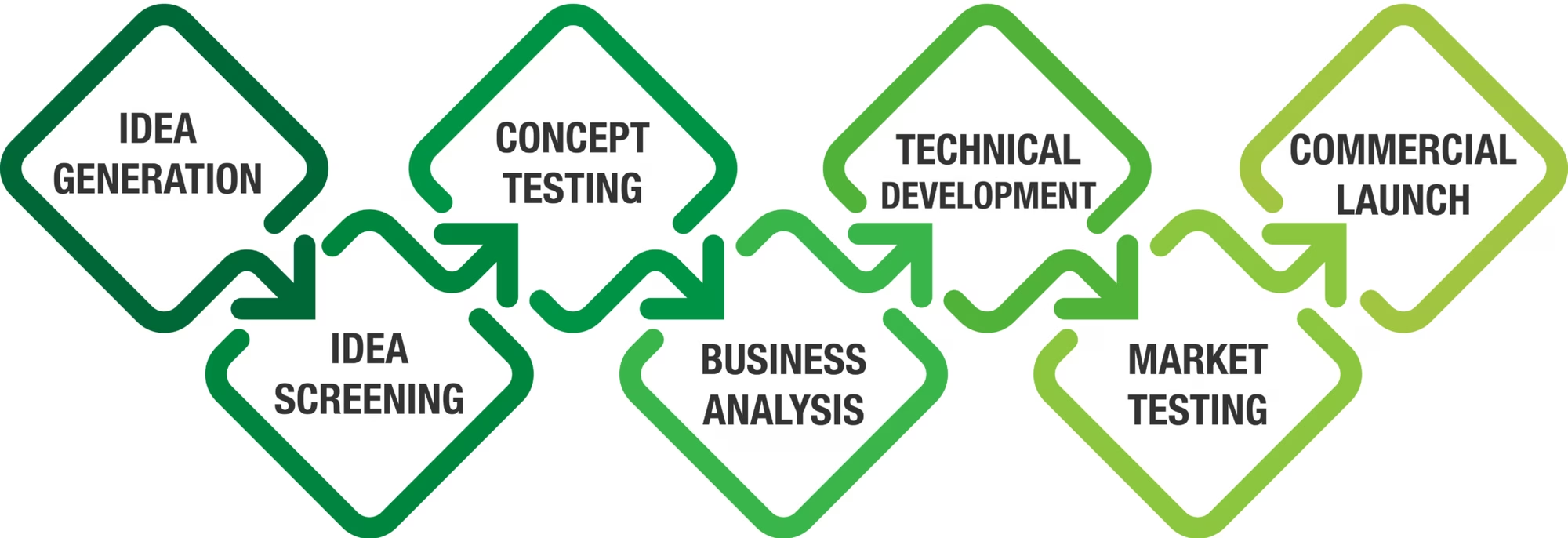New product development (NPD)/trials covers the complete process of bringing a new product to market, renewing an existing product or introducing a product in a new market. New product development is described broadly as the transformation of a market opportunity into a product available for sale. The products developed at STARKE AYRES provide the means for it to generate income.
At STARKE AYRES, a central aspect of NPD/trials is product design coordinated with various business units. The approach is based on exploiting technological innovation in a rapidly changing market.
The product can be tangible (something physical which one can touch) or intangible (like a service, experience, or belief), though sometimes services and other processes are distinguished from “products”.
NPD/trials require an understanding of customer needs and wants, the competitive environment, and the nature of the market. Cost, time and quality are the main variables that drive customer needs. Aiming at these three variables and innovation, STARKE AYRES continuously develops practices and strategies to better satisfy customer requirements and to increase its own market share through regular new product development.
Throughout the NPD process, a company faces many uncertainties and challenges which is why best practice and the elimination of barriers to communication are the main concerns for the management of the NPD and trials.
The new product development process
At STARKE AYRES, the objective is to avoid costly failures by continually reviewing the prospects for the new product/product idea, giving the company several specific points in the development process at which the decision to stop or continue development can be made. This eliminates the possibility of making the costly mistake of launching a product which ultimately proves unsuccessful. By the time a product is launched, all development costs have been incurred and investments have been made in production equipment. Marketing costs have also been incurred in setting up the distribution system, promotional collateral and so on.
The NPD/Trials flow chart:

Idea generation (new varieties identification)
The objective of idea generation is to gather as many ideas as possible from as many sources as possible. Possible sources include:
INTERNAL:
- R&D department, committee or task force
- Product managers
- Sales agronomists
- Production staff
- Other company employees
EXTERNAL:
- Suppliers or market intermediaries
- Customers
- Competition
- The public
Concept testing/trials initiation
At the NPD/trials concept testing, many factors contribute to the failure of new products but a principal cause is the inability to predict customer response to new products and services. Systematic tests/trials can be used to reduce expensive failures. These include concept testing, market positioning tests, product testing and market testing.
Business analysis/ trial evaluation
By this stage, a number of new product ideas which do not match STARKE AYRES objectives and/or resources would have been screened out, while others may have been modified as a result of the concept and/or positioning tests.
Technical development/recommendation/adoption
In this phase the product concept is translated into a prototype or trial formulation. Such an analysis would involve an assessment of the total capital investment cost, the likely return on investment and the payback period. Wherever possible, this should be carried out before a physical product has been manufactured or otherwise produced. The objective at this stage is not to produce precise sales forecasts but to establish the broad order of magnitude of probable sales volumes, revenues and expenses. Since no physical product would have yet been produced or tested among potential customers, it is virtually impossible to arrive at precise sales or profit forecasts for the product. Instead, the analysis is likely to concentrate on the broad prospects for the product class within which the proposed product would fall, and from that deduce some crude estimates of sales and profits.
Market testing
The main aim of test market studies is to provide real-world, in-market exposure for evaluating the product and its marketing programme. In essence, the marketing manager is taking a proposed national programme with all of its separate elements, and evaluating it in a smaller, less expensive setting. The aim is to determine whether the potential profit opportunity outweighs the potential risks by a considerable margin. Here, for example, new forms of packaging could be test marketed.
Ideally a test market should be capable of providing information on such factors as:
- Market share of product and/or volume estimates
- Who buys the product, how often and for what purpose
- Where the purchases are made, and at what price
- What response was made by competitors
- What effect the new item has on existing product lines or brands, including the company’s own
Test marketing offers at least two important benefits:
It provides an opportunity to obtain a measure of a product’s sales performance under reasonably natural market conditions. Market share can be estimated and used as the basis of the decision whether the product is launched nationally.
It provides an opportunity for management to identify and correct product or marketing strategy weaknesses before a national launch takes place.
Commercialisation
Assuming that the market test is positive, the full-scale production, introduction and marketing (ie, commercialisation) of the product can take place. STARKE AYRES decides whether, in the light of all available information, the new product should be commercialised. Commercialisation commits the company to spending sizable sums of money. A full-scale seed production unit has to be set. The actual size of that facility would depend on the forecasted sales of the new product and the faith that management has in that forecast.